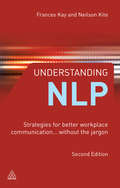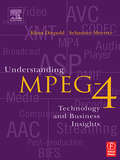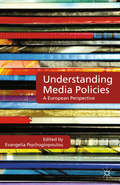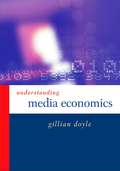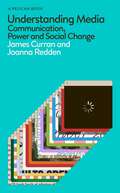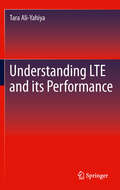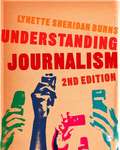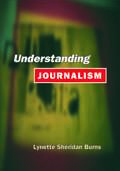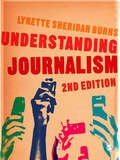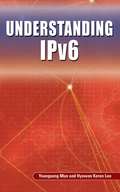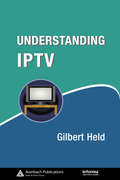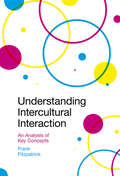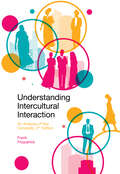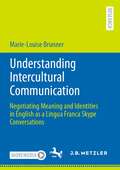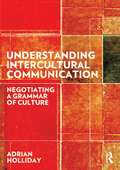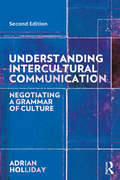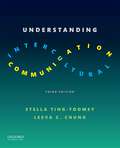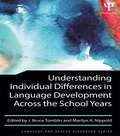- Table View
- List View
Understanding NLP: Strategies for Better Workplace Communication.. Without the Jargon
by Neilson Kite Frances KayHave you ever wondered how some people constantly achieve success in the workplace and in everyday life? Do you wish you knew more about how they think and behave? Understanding NLP will take you a step closer to sharing their success by showing you how to achieve personal and organizational goals. By applying the principles of NLP to the working environment and describing familiar situations in jargon-free language, it provides insights into interpersonal differences, selling and negotiation, influencing skills and the use of language. Further simplifying the key concepts of NLP and with greater emphasis on the differences between rapport and relationship and how both can be better developed and managed, Understanding NLP provides even more clarity and guidance in a simple and common sense way, helping you to make radical changes in the way you approach people, life and work.
Understanding MPEG 4: Technology and Business Insights
by Sebastian Moeritz Klaus DiepoldThe Practical Guide to MPEG 4 offers an up to date introduction to this important interactive and multimedia compression standard (including MPEG-4 Part 10), with real examples and information as to how and where this new technology should be used. All aspects of MPEG-4 that are relevant in today's technical landscape are described in this book, including video and audio creation, production, distribution, reception and consumption environment. This book explains everything you really need to know in jargon-free language: interactive systems, content management, deployment, licensing and business models.
Understanding MPEG 4: Technology and Business Insights
by Sebastian Moeritz Klaus DiepoldThe Practical Guide to MPEG 4 offers an up to date introduction to this important interactive and multimedia compression standard (including MPEG-4 Part 10), with real examples and information as to how and where this new technology should be used. All aspects of MPEG-4 that are relevant in today's technical landscape are described in this book, including video and audio creation, production, distribution, reception and consumption environment. This book explains everything you really need to know in jargon-free language: interactive systems, content management, deployment, licensing and business models.
Understanding Media Policies: A European Perspective
by Evangelia PsychogiopoulouLeading scholars investigate media policies in Europe, inquiring into the regulatory practices, policy tools and institutional features of media policy-making in 14 countries. The book offers a fresh assessment of the ways European media policies are formulated and identifies the factors that exert an influence throughout the process.
Understanding Media Economics (PDF)
by Gillian Doyle`This book provides an extremely well written and informative introduction to the subject of media economics, characterized by clarity in the explanation of concepts or frameworks and by a balanced discussion for the respective positions in areas of debate' - Paul MacDonald, Roehampton Institute Understanding Media Economics provides a clear, precise introduction to the key economic concepts and issues affecting the media. The book: explains the fundamental concepts relevant to the study of media economics; considers the key industrial questions facing the media industries today; relates economic theory to business practice; covers a wide range of media activity - advertising, television, film, print media, and new media; and looks at the impact of economics on public policy. Understanding Media Economics offers a stimulating perspective on the contemporary media environment. This book will be an essential purchase for all students of the media and mass communication.
Understanding Media: Communication, Power and Social Change (Pelican Books)
by James Curran Joanna ReddenAn authoritative and accessible guide to the world’s most influential force – the contemporary media Our lives are more mediated than ever before. Adults in economically advanced countries spend, on average, over eight hours per day interacting with the media. The news and entertainment industries are being transformed by the shift to digital platforms. But how much is really changing in terms of what shapes media content? What are the impacts on our public and imaginative life? And is the Internet a democratising tool of social protest, or of state and commercial manipulation?Drawing on decades of research to examine these and other questions, Understanding Media interrogates claims about the Internet, explores how representations in TV and film may influence perceptions of self, and traces overarching trends while attending to crucial local context, from the United States to China, Norway to Malaysia, and Brazil to Britain. Understanding Media is an accessible and essential guide to the world's most influential force - the contemporary media.
Understanding LTE and its Performance
by Tara Ali-YahiyaThe aim of this book is to provide comprehensive coverage of current state of the art theoretical and technological aspects of broadband mobile and wireless networks focusing on Long Term Evolution Network. The presentation starts from basic principles, and proceeds to the most advanced topics. Provided schemes are developed and oriented in the context of actual closed standards of the IEEE working groups and the 3 GPPP LTE. Also this book will focus on the understanding of the LTE technology as well as the study of its performance in terms of mobility, quality of service, security, resource allocation.
Understanding Journalism (PDF)
by Lynette Sheridan BurnsThe new era of Google, Twitter and Facebook has fundamentally shifted the journalist's relationship with the audience. To navigate these new realities, it is imperative for journalism students to master skills in cross-platform writing, and understand the implications on their communication decisions. This second edition of Understanding Journalism tackles these changes head-on. It integrates media and cultural theory with the step-by-step development of writing skills to give students the techniques and the savvy they need to succeed. Bigger and better, this new edition includes: A new chapter on who journalists are in the social media age Reorganization of journalism skills chapters to bring writing and editing to the fore Full coverage and examples on Twitter, social media, SMS formats In-depth exploration of the ethical issues raised by new media platforms All new exercises, case scenarios and further readings It is the essential guide for all students of journalism.
Understanding Journalism (PDF)
by Lynette Sheridan BurnsUnderstanding Journalism provides an indispensable guide through the processes and decisions required to produce quality journalism. Starting from `What is news?' and moving on to consider decisions about public interest, accuracy and reliability of sources, and ethics, this book provides a model for practice centering on developing skills in critical self-reflection. It will help answer the question of `Where to begin?' - examining the processes used by journalists to define, identify, evaluate and create journalism. Understanding Journalism offers a guide to: Finding news - exploring the nature of news and the factors influencing news judgement Choosing news - considering the power journalists exercise in selecting the issues that become news and examining the ethical implications of these decisions Gathering news - focusing on primary research - specifically interviews Constructing news - explores the processes used in deciding what to omit and what to include in the news depending on a targeted audience Working With Words - explores the role of editing in journalism and how it affects media messages Understanding Journalism will be essential reading for all students of journalism.
Understanding Journalism
by Lynette Sheridan BurnsThe new era of Google, Twitter and Facebook has fundamentally shifted the journalist's relationship with the audience. To navigate these new realities, it is imperative for journalism students to master skills in cross-platform writing, and understand the implications on their communication decisions. This second edition of Understanding Journalism tackles these changes head-on. It integrates media and cultural theory with the step-by-step development of writing skills to give students the techniques and the savvy they need to succeed. Bigger and better, this new edition includes: A new chapter on who journalists are in the social media age Reorganization of journalism skills chapters to bring writing and editing to the fore Full coverage and examples on Twitter, social media, SMS formats In-depth exploration of the ethical issues raised by new media platforms All new exercises, case scenarios and further readings It is the essential guide for all students of journalism.
Understanding IPv6
by Youngsong Mun Hyewon Keren LeeCovers the basic materials and up-to-date information to understand IPv6, including site local address often overlooked by most other books about IPv6 do not reflect this important fact. Highlights Teredo, a transistion tool that permits web sites using two different protocols to interact, with complete-chapter coverage.. Since popular applications such as web service can not be operated without DNS. Chapter 9 covers modifications in DNS for IPv6 which other books rarely cover. Other topics covered that make it a most up-to-date and valuable resource: hierarchical mobility management, fast handoff, and security features such as VPN traversal and firewall traversal.
Understanding IPTV
by Gilbert HeldDriven by a combination of technological improvements and commercial pressure, interest in IPTV services has increasingly grown. IPTV refers to the use of the Internet protocol required for delivery of television content. IPTV represents an emerging technology that could change the manner in which homes receive entertainment, personal computers ope
Understanding Intercultural Interaction: An Analysis of Key Concepts
by Frank FitzpatrickLiving, working and studying in intercultural and international contexts is ever more relevant to a broad range of individuals including educators, social scientists and professionals. As education and work become increasingly international, every student and professional at some point is likely to feel the need to explore and discuss concepts of culture and identity in order to be prepared for intercultural encounters in the globalised workplace. Understanding Intercultural Interaction encourages readers to abandon the notion that culture is something static that we possess or have inherited and to see it as fluid and dynamic, created, interpreted and negotiated through social interaction. It recommends an examination of the contextual framework of intercultural behaviour and the power relations and inequalities that pervade it to enable readers to understand themselves and the role that they play on the international stage. In its exploration of key concepts in culture and interaction, the book equips students and professionals from varied backgrounds with the tools to understand, discuss and apply them to their own lives. Designed principally as an accessible introduction for non-specialists to explore a wide range of theories and ideas that seek to explain intercultural encounters, the critical analysis provided in this book also offers ample scope for more in-depth exploration by those who wish to deepen their knowledge of the field, making it ideal for facilitating reflection and discussion in study or training contexts.
Understanding Intercultural Interaction: An Analysis of Key Concepts
by Frank FitzpatrickLiving, working and studying in intercultural and international contexts is ever more relevant to a broad range of individuals including educators, social scientists and professionals. As education and work become increasingly international, every student and professional at some point is likely to feel the need to explore and discuss concepts of culture and identity in order to be prepared for intercultural encounters in the globalised workplace. Understanding Intercultural Interaction encourages readers to abandon the notion that culture is something static that we possess or have inherited and to see it as fluid and dynamic, created, interpreted and negotiated through social interaction. It recommends an examination of the contextual framework of intercultural behaviour and the power relations and inequalities that pervade it to enable readers to understand themselves and the role that they play on the international stage. In its exploration of key concepts in culture and interaction, the book equips students and professionals from varied backgrounds with the tools to understand, discuss and apply them to their own lives. Designed principally as an accessible introduction for non-specialists to explore a wide range of theories and ideas that seek to explain intercultural encounters, the critical analysis provided in this book also offers ample scope for more in-depth exploration by those who wish to deepen their knowledge of the field, making it ideal for facilitating reflection and discussion in study or training contexts.
Understanding Intercultural Interaction: An Analysis of Key Concepts
by Frank FitzpatrickIn an increasingly global world, it is more important than ever that we deepen our understanding of how people interact and communicate across different cultural contexts. Designed as an introduction to a wide range of theories and ideas that influence social encounters around the globe, this 2nd Edition of Understanding Intercultural Interaction places new emphasis on the ‘global workplace’, providing an overview and analysis of key concepts in culture and interaction to develop your knowledge in areas such as global working, diversity management, interculturality, and cross-cultural ethics. Cutting across the world of work and education, this is a timely refresh for equipping a diverse range of both students and professionals with the tools to understand, discuss, and ultimately fulfil the role that they can play on the international stage.
Understanding Intercultural Interaction: An Analysis of Key Concepts
by Frank FitzpatrickIn an increasingly global world, it is more important than ever that we deepen our understanding of how people interact and communicate across different cultural contexts. Designed as an introduction to a wide range of theories and ideas that influence social encounters around the globe, this 2nd Edition of Understanding Intercultural Interaction places new emphasis on the ‘global workplace’, providing an overview and analysis of key concepts in culture and interaction to develop your knowledge in areas such as global working, diversity management, interculturality, and cross-cultural ethics. Cutting across the world of work and education, this is a timely refresh for equipping a diverse range of both students and professionals with the tools to understand, discuss, and ultimately fulfil the role that they can play on the international stage.
Understanding Intercultural Communication: Negotiating Meaning and Identities in English as a Lingua Franca Skype Conversations
by Marie-Louise BrunnerToday, academics, business professionals and private persons alike need to communicate successfully and establish relationships with people from various cultures through digital means. These skills have now become essential in virtual environments. This book provides an in-depth analysis of how interlocutors negotiate meaning and identities in intercultural video-mediated communication as an important step to improving interactions on a global scale. It contributes to understanding the complex negotiation processes and strategies involved in communicating successfully and in establishing rapport in an intercultural and video-mediated context. Speakers in this English as a Lingua Franca setting act as accomplished conversationalists who efficiently employ various strategies to make themselves understood and to preempt interactional difficulties. At the same time, interlocutors (re)negotiate identities on various levels in the process of their interactions with conversation partners. Based on these insights, this book concludes with practical suggestions for educational and professional applications.
Understanding Intercultural Communication: Negotiating a Grammar of Culture
by Adrian HollidayIn this book, Adrian Holliday provides a practical framework to help students analyse intercultural communication. Underpinned by a new grammar of culture developed by Holliday, this book will incorporate examples and activities to enable students and professionals to investigate culture on very new, entirely non-essentialist lines. This book will address key issues in intercultural communication including: the positive contribution of people from diverse cultural backgrounds the politics of Self and Other which promote negative stereotyping the basis for a bottom-up approach to globalization in which Periphery cultural realities can gain voice and ownership Written by a key researcher in the field, this book presents cutting edge research and a framework for analysis which will make it essential reading for upper undergraduate and postgraduate students studying intercultural communication and professionals in the field.
Understanding Intercultural Communication: Negotiating a Grammar of Culture
by Adrian HollidayIn this book, Adrian Holliday provides a practical framework to help students analyse intercultural communication. Underpinned by a new grammar of culture developed by Holliday, this book will incorporate examples and activities to enable students and professionals to investigate culture on very new, entirely non-essentialist lines. This book will address key issues in intercultural communication including: the positive contribution of people from diverse cultural backgrounds the politics of Self and Other which promote negative stereotyping the basis for a bottom-up approach to globalization in which Periphery cultural realities can gain voice and ownership Written by a key researcher in the field, this book presents cutting edge research and a framework for analysis which will make it essential reading for upper undergraduate and postgraduate students studying intercultural communication and professionals in the field.
Understanding Intercultural Communication: Negotiating a Grammar of Culture
by Adrian HollidayUnderstanding Intercultural Communication provides a practical framework to help readers to understand intercultural communication and to solve intercultural problems. Each chapter exemplifies the everyday intercultural through ethnographic narratives in which people make sense of each other in home, work and study locations. Underpinned by a grammar of culture developed by the author, this book addresses key issues in intercultural communication, including: the positive contribution of people from diverse cultural backgrounds; the politics of Self and Other which promote negative stereotyping; the basis for a de-centred approach to globalisation in which periphery cultural realities can gain voice and ownership. Written by a leading researcher in the field, the new edition of this important text has been revised to invite the reader to reflect and develop their own intercultural and research strategies, and updated to include new ideas that have emerged in Holliday’s own work and elsewhere. This book is a key resource for academics, students and practitioners in intercultural communication and related fields.
Understanding Intercultural Communication: Negotiating a Grammar of Culture
by Adrian HollidayUnderstanding Intercultural Communication provides a practical framework to help readers to understand intercultural communication and to solve intercultural problems. Each chapter exemplifies the everyday intercultural through ethnographic narratives in which people make sense of each other in home, work and study locations. Underpinned by a grammar of culture developed by the author, this book addresses key issues in intercultural communication, including: the positive contribution of people from diverse cultural backgrounds; the politics of Self and Other which promote negative stereotyping; the basis for a de-centred approach to globalisation in which periphery cultural realities can gain voice and ownership. Written by a leading researcher in the field, the new edition of this important text has been revised to invite the reader to reflect and develop their own intercultural and research strategies, and updated to include new ideas that have emerged in Holliday’s own work and elsewhere. This book is a key resource for academics, students and practitioners in intercultural communication and related fields.
Understanding Intercultural Communication
by Stella Ting-Toomey Leeva ChungUnderstanding Intercultural Communication, 3rd Edition (UIC3) emphasizes a perspective that integrates intersectional identity complexity with a strong values orientation in shaping intercultural contact. We address contemporary issues such as the important roles and effects of technology in our everyday intercultural lives. This is an introductory book designed for undergraduate students, teachers, and practitioners searching for a user-friendly textbook on the fundamentals of intercultural communication. With the lens of flexible intercultural communication, we thread through an abundance of intercultural material with a very practical theme. By integrating current empirical research with lively intercultural examples, the authors ask thought-provoking questions and pose ethical dilemmas for students to ponder.
Understanding Interactive Network Branding in SME Firms
by Nikolina Koporcic Jan-Åke TörnroosIntroducing the innovative concept of Interactive Network Branding (INB), this book offers academics and professionals a theoretical framework, alongside practical examples, to develop INB in the context of small and medium-sized enterprises (SMEs). Combining a business network approach with contemporary corporate branding research, a variety of topics are explored, including: strategizing in SME networks, market management, corporate identity, corporate reputation, human-to-human (H2H) interactions. This broad range of perspectives, from business networks to corporate branding, highlights the latest trends in both business marketing and organizational research whilst emphasizing the influential role of human actors in SMEs. Looking at successful cases of INB and analysing cases where branding has gone wrong, Understanding Interactive Network Branding in SME Firms offers guidelines for researchers in marketing theory and practitioners working in SME firms to develop their branding models and processes in fast changing business environments.
Understanding Interactive Network Branding in SME Firms
by Nikolina Koporcic Jan-Åke TörnroosIntroducing the innovative concept of Interactive Network Branding (INB), this book offers academics and professionals a theoretical framework, alongside practical examples, to develop INB in the context of small and medium-sized enterprises (SMEs). Combining a business network approach with contemporary corporate branding research, a variety of topics are explored, including: strategizing in SME networks, market management, corporate identity, corporate reputation, human-to-human (H2H) interactions. This broad range of perspectives, from business networks to corporate branding, highlights the latest trends in both business marketing and organizational research whilst emphasizing the influential role of human actors in SMEs. Looking at successful cases of INB and analysing cases where branding has gone wrong, Understanding Interactive Network Branding in SME Firms offers guidelines for researchers in marketing theory and practitioners working in SME firms to develop their branding models and processes in fast changing business environments.
Understanding Individual Differences in Language Development Across the School Years
by J. Bruce Tomblin Marilyn A. NippoldThis volume presents the findings of a large-scale study of individual differences in spoken (and heard) language development during the school years. The goal of the study was to investigate the degree to which language abilities at school entry were stable over time and influential in the child’s overall success in important aspects of development. The methodology was a longitudinal study of over 600 children in the US Midwest during a 10-year period. The language skills of these children -- along with reading, academic, and psychosocial outcomes -- were measured. There was intentional oversampling of children with poor language ability without being associated with other developmental or sensory disorders. Furthermore, these children could be sub-grouped based on their nonverbal abilities, such that one group represents children with specific language impairment (SLI), and the other group with nonspecific language impairment (NLI) represents poor language along with depressed nonverbal abilities. Throughout the book, the authors consider whether these distinctions are supported by evidence obtained in this study and which aspects of development are impacted by poor language ability. Data are provided that allow conclusions to be made regarding the level of risk associated with different degrees of poor language and whether this risk should be viewed as lying on a continuum. The volume will appeal to researchers and professionals with an interest in children’s language development, particularly those working with children who have a range of language impairments. This includes Speech and Language Pathologists; Child Neuropsychologists; Clinical Psychologists working in Education, as well as Psycholinguists and Developmental Psychologists.
